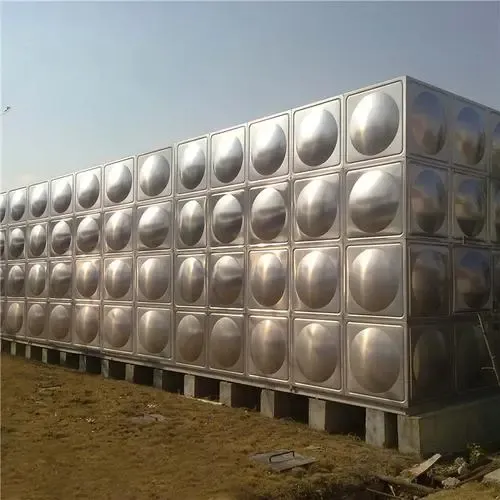loading...
- No. 9, Xingyuan South Street, Dongwaihuan Road, Zaoqiang County, Hengshui, Hebei, China
- admin@zjcomposites.com
- +86 15097380338
- Welcome to visit our website!
glass fiber reinforced polymer rebar
Glass Fiber Reinforced Polymer Rebar A Sustainable Solution for Construction
In recent years, the construction industry has seen a paradigm shift towards sustainable materials that not only meet structural requirements but also minimize environmental impact. One such innovative material making waves in this field is Glass Fiber Reinforced Polymer (GFRP) rebar. Unlike traditional steel rebar, GFRP offers a myriad of advantages that make it an attractive option for modern construction projects.
What is GFRP Rebar?
Glass Fiber Reinforced Polymer rebar is a composite material that consists of a polymer matrix reinforced with glass fibers. This unique composition not only enhances the tensile strength of the material but also provides it with low weight and excellent durability. GFRP rebar is produced in various shapes and sizes to meet specific engineering requirements, and it is increasingly being utilized in infrastructure projects, including bridges, highways, and buildings.
Benefits of GFRP Rebar
1. Corrosion Resistance One of the most significant benefits of GFRP rebar is its resistance to corrosion. Traditional steel rebar is prone to rust when exposed to moisture, salt, and other corrosive elements, leading to structural degradation and costly repairs. GFRP, on the other hand, does not corrode, which significantly extends the lifespan of structures and reduces maintenance costs.
2. Lightweight GFRP rebar is considerably lighter than steel, making it easier to transport, handle, and install. This lightweight nature can lead to reduced labor costs and increased efficiency during construction. Workers can maneuver GFRP without the need for heavy lifting equipment, further streamlining the installation process.
3. High Strength-to-Weight Ratio Despite being lightweight, GFRP rebar possesses a high strength-to-weight ratio, providing excellent structural support. Its tensile strength is comparable to that of steel, making it an ideal choice for applications where weight and strength are crucial factors, such as in modular construction and seismic-resistant designs.
4. Non-Magnetic Properties GFRP rebar is non-magnetic, making it ideal for use in applications where magnetic interference is a concern, such as in medical facilities or laboratories. This characteristic ensures that sensitive equipment remains unaffected by the structural elements surrounding it.
glass fiber reinforced polymer rebar

5. Thermal Insulation GFRP has lower thermal conductivity compared to steel, contributing to better thermal insulation in construction projects. This can lead to improved energy efficiency in buildings, reducing heating and cooling costs over time.
Applications in Modern Construction
The versatility of GFRP rebar opens up a plethora of application opportunities in the construction sector. It is particularly beneficial in coastal areas where structures are subjected to harsh environmental conditions, such as saltwater exposure. Bridges, marine structures, and parking garages are just a few examples where GFRP rebar can significantly enhance durability.
In addition to its use in new constructions, GFRP rebar is increasingly utilized in the rehabilitation and retrofitting of existing structures. It can be incorporated into repairs to bolster weakened sections, offering an effective reinforcement alternative that is less susceptible to future corrosion.
Challenges and Considerations
Despite its numerous benefits, there are some challenges associated with the adoption of GFRP rebar. The initial cost can be higher than that of traditional steel, which may deter some construction stakeholders. However, when considering the long-term savings associated with reduced maintenance and a prolonged lifespan, GFRP rebar often proves to be a cost-effective solution.
Moreover, the construction industry needs to adapt to the different behavior of GFRP compared to steel. Engineers and architects must be educated in designing structures that account for the unique properties of GFRP, ensuring optimal performance and safety.
Conclusion
As the construction industry continues to evolve towards more sustainable practices, Glass Fiber Reinforced Polymer rebar presents an exciting opportunity to enhance structural integrity while minimizing environmental impact. Its corrosion resistance, lightweight nature, high strength, and versatility make it a formidable alternative to traditional materials. Investing in GFRP rebar not only contributes to the durability of our infrastructure but also aligns with the growing demand for sustainable building solutions. With continued research and development, the future of GFRP in construction looks increasingly promising, paving the way for smarter, safer, and more resilient structures.
-
GRP Structures: The Future of Lightweight, High-Performance EngineeringNewsJun.20,2025
-
FRP Water Tank: High-Performance Storage for Corrosive and Clean Water SystemsNewsJun.20,2025
-
FRP Square Tube: The New Industry Standard for Chemical and Structural ApplicationsNewsJun.20,2025
-
FRP Pultruded Profiles: The Ultimate Choice for Lightweight Structural StrengthNewsJun.20,2025
-
FRP Handrails: The Safer, Smarter, and Stronger Choice for Modern InfrastructureNewsJun.20,2025
-
FRP Grating: The Smart Solution for Durable, Lightweight Industrial FlooringNewsJun.20,2025
-
Why Choose a Galvanized Water Tank for Your Storage NeedsNewsMay.21,2025
